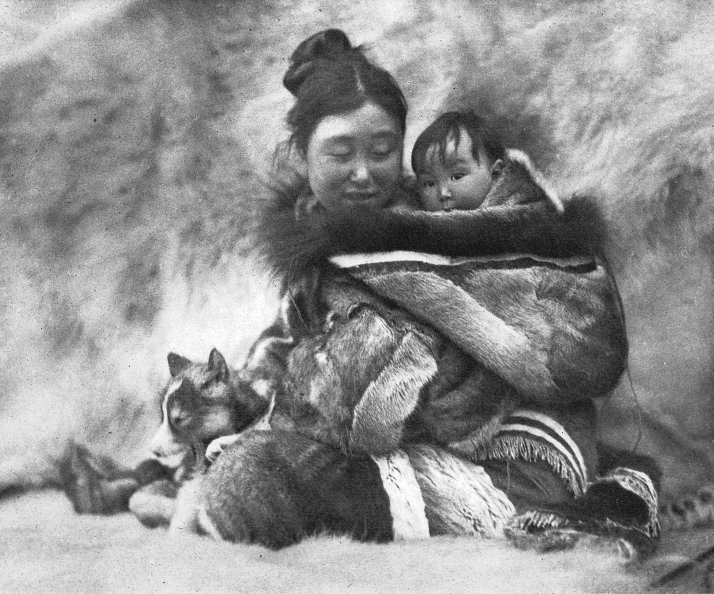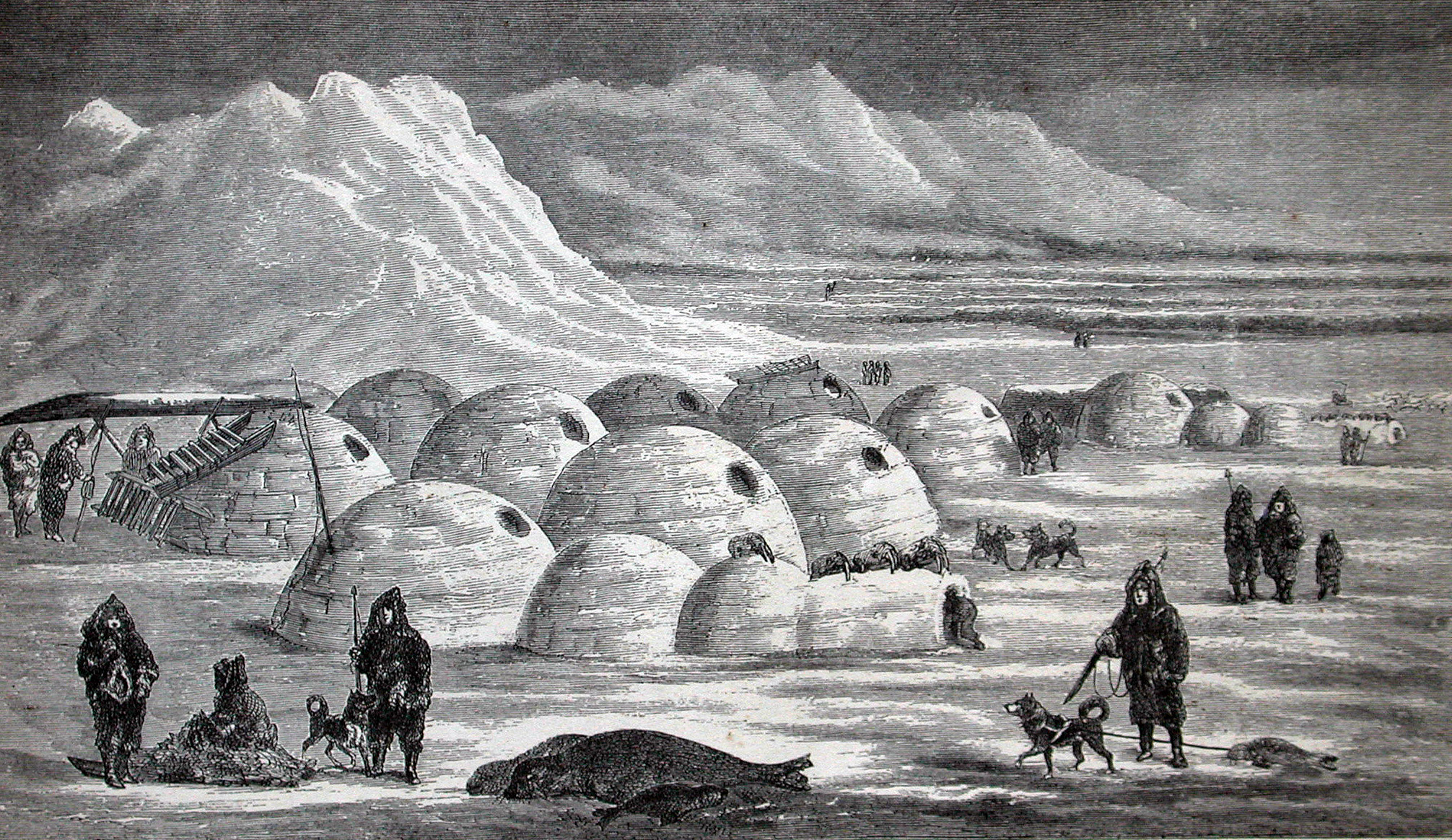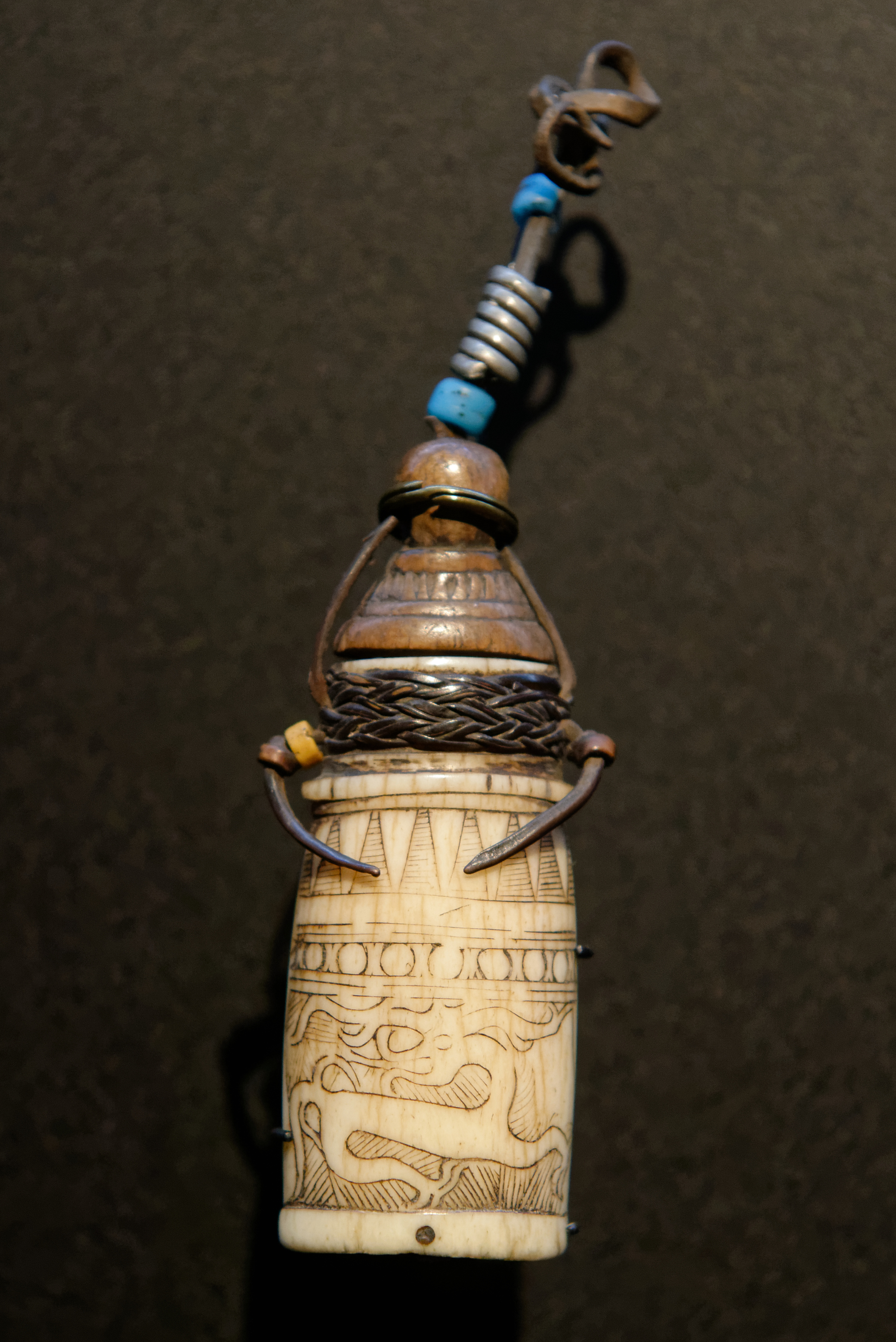|
Nanook (Altered)
In Inuit religion, Nanook (; iu, ᓇᓄᖅ , lit. "polar bear") was the master of bears, meaning he decided if hunters deserved success in finding and hunting bears and punished violations of taboos. The word was popularized by ''Nanook of the North'', the first feature-length documentary. The Inuit believed that Nanook, the polar bear, was powerful and mighty, and they thought that he was "almost man." The Inuit hunters would worship this great bear because they believed that he decided if the hunters would be successful. “In the past, the Inuit ate polar bear meat and used the fur to make warm trousers for men and kamiks (soft boots) for women”."The Inuit and Polar Bears." Polar Bears International. N.p., n.d. Web. 19 Nov. 2013. [...More Info...] [...Related Items...] OR: [Wikipedia] [Google] [Baidu] |
Inuit Religion
Inuit religion is the shared spiritual beliefs and practices of the Inuit, an Indigenous peoples of the Americas, indigenous people from Alaska, northern Canada, parts of Siberia and Greenland. Their religion shares many similarities with some Alaska Native religions. Traditional Inuit religious practices include animism and shamanism, in which spiritual healers mediate with spirits. Today many Inuit follow Christianity, but traditional Inuit spirituality continues as part of a living, oral tradition and part of contemporary Inuit society. Inuit who balance indigenous and Christian theology practice religious syncretism. Inuit cosmology provides a narrative about the world and the place of people within it. Rachel Qitsualik-Tinsley writes: Traditional stories, rituals, and taboos of the Inuit are often precautions against dangers posed by their harsh Arctic environment. Knud Rasmussen asked his guide and friend Aua (angakkuq), Aua, an ''angakkuq'' (spiritual healer), about Inuit ... [...More Info...] [...Related Items...] OR: [Wikipedia] [Google] [Baidu] |
Taboo
A taboo or tabu is a social group's ban, prohibition, or avoidance of something (usually an utterance or behavior) based on the group's sense that it is excessively repulsive, sacred, or allowed only for certain persons.''Encyclopædia Britannica Online''.Taboo. Encyclopædia Britannica Inc., 2012. Retrieved 21 Mar. 2012 Such prohibitions are present in virtually all societies. Taboos may be prohibited explicitly, for example within a legal system or religion, or implicitly, for example by social norms or conventions followed by a particular culture or organization. Taboos are often meant to protect the individual, but there are other reasons for their development. An ecological or medical background is apparent in many, including some that are seen as religious or spiritual in origin. Taboos can help use a resource more efficiently, but when applied to only a subsection of the community they can also serve to suppress said subsection of the community. A taboo acknowledged by a ... [...More Info...] [...Related Items...] OR: [Wikipedia] [Google] [Baidu] |
Nanook Of The North
''Nanook of the North'' is a 1922 American silent film which combines elements of documentary and docudrama, at a time when the concept of separating films into documentary and drama did not yet exist. In the tradition of what would later be called salvage ethnography, the film follows the struggles of the Inuk man named Nanook and his family in the Canadian Arctic. It is written and directed by Robert J. Flaherty, who also served as cinematographer, editor, and producer. Some have criticized Flaherty for staging several sequences, but the film has been described by Roger Ebert as "stand ngalone" among Flaherty's films "in its stark regard for the courage and ingenuity of its heroes." It was the first feature-length documentary to achieve commercial success, proving the financial viability of the genre and inspiring many films to come. In 1989, ''Nanook of the North'' was among the first group of 25 films selected by the Library of Congress for preservation in the United Sta ... [...More Info...] [...Related Items...] OR: [Wikipedia] [Google] [Baidu] |
Inuit
Inuit (; iu, ᐃᓄᐃᑦ 'the people', singular: Inuk, , dual: Inuuk, ) are a group of culturally similar indigenous peoples inhabiting the Arctic and subarctic regions of Greenland, Labrador, Quebec, Nunavut, the Northwest Territories, and Alaska. Inuit languages are part of the Eskimo–Aleut languages, also known as Inuit-Yupik-Unangan, and also as Eskaleut. Inuit Sign Language is a critically endangered language isolate used in Nunavut. Inuit live throughout most of Northern Canada in the territory of Nunavut, Nunavik in the northern third of Quebec, Nunatsiavut and NunatuKavut in Labrador, and in various parts of the Northwest Territories, particularly around the Arctic Ocean, in the Inuvialuit Settlement Region. With the exception of NunatuKavut, these areas are known, primarily by Inuit Tapiriit Kanatami, as Inuit Nunangat. In Canada, sections 25 and 35 of the Constitution Act of 1982 classify Inuit as a distinctive group of Aboriginal Canadians wh ... [...More Info...] [...Related Items...] OR: [Wikipedia] [Google] [Baidu] |
Polar Bear
The polar bear (''Ursus maritimus'') is a hypercarnivorous bear whose native range lies largely within the Arctic Circle, encompassing the Arctic Ocean, its surrounding seas and surrounding land masses. It is the largest extant bear species, as well as the largest extant land carnivore. A boar (adult male) weighs around , while a sow (adult female) is about half that size. Although it is the sister species of the brown bear, it has evolved to occupy a narrower ecological niche, with many body characteristics adapted for cold temperatures, for moving across snow, ice and open water, and for hunting seals, which make up most of its diet. Although most polar bears are born on land, they spend most of their time on the sea ice. Their scientific name means "maritime bear" and derives from this fact. Polar bears hunt their preferred food of seals from the edge of sea ice, often living off fat reserves when no sea ice is present. Because of their dependence on the sea ice, polar be ... [...More Info...] [...Related Items...] OR: [Wikipedia] [Google] [Baidu] |
Igloo
An igloo (Inuit languages: , Inuktitut syllabics (plural: )), also known as a snow house or snow hut, is a type of shelter built of suitable snow. Although igloos are often associated with all Inuit, they were traditionally used only by the people of Canada's Central Arctic and the Qaanaaq area of Greenland. Other Inuit tended to use snow to insulate their houses, which were constructed from whalebone and hides. Snow is used because the air pockets trapped in it make it an insulator. On the outside, temperatures may be as low as , but on the inside, the temperature may range from when warmed by body heat alone. Nomenclature The Inuit language word (plural ) can be used for a house or home built of any material, and is not restricted exclusively to snowhouses (called specifically , plural ), but includes traditional tents, sod houses, homes constructed of driftwood and modern buildings. Several dialects throughout the Canadian Arctic (Siglitun, Inuinnaqtun, Natsil ... [...More Info...] [...Related Items...] OR: [Wikipedia] [Google] [Baidu] |
Needlecase
A needlecase or needle case is a small, often decorative, holder for sewing needles. Early needlecases were usually small tubular containers of bone, wood, or bronze with tight-fitting stoppers, often designed to hang from a belt. Needlecases are sometimes called by the French name ''étui'' and are typically one of the tools attached to a chatelaine. A pin poppet is a similar container for pins, common in the 18th century. History Early sewing needles were precious items and easily lost. Needlecases were a necessity for storing these fragile objects, and are found in cultures around the world. Tubular bronze needlecases are common finds from Viking-age sites in Europe. Cane needlecases were found in a grave from Cerro Azul, Peru, dated to 1000–1470 AD. Bone, leather and metal needlecases have been found from Medieval London, and bone or ivory needlecases were made by Inuit. Bone and ivory needlecases and pin poppets were also popular in 18th century America. Elaborate needlew ... [...More Info...] [...Related Items...] OR: [Wikipedia] [Google] [Baidu] |
Animism
Animism (from Latin: ' meaning 'breath, Soul, spirit, life') is the belief that objects, places, and creatures all possess a distinct Spirituality, spiritual essence. Potentially, animism perceives all things—Animal, animals, Plant, plants, Rock (geology), rocks, River, rivers, Weather, weather systems, human handiwork, and perhaps even Word, words—as animated and alive. Animism is used in the anthropology of religion, as a term for the Belief, belief system of many Indigenous peoples, especially in contrast to the relatively more recent development of organized religions. Animism focuses on the Metaphysics, metaphysical universe, with a specific focus on the concept of the immaterial soul. Although each culture has its own mythologies and rituals, animism is said to describe the most common, foundational thread of indigenous peoples' "spiritual" or "supernatural" perspectives. The animistic perspective is so widely held and inherent to most indigenous peoples, that they ofte ... [...More Info...] [...Related Items...] OR: [Wikipedia] [Google] [Baidu] |
List Of Hunting Deities
A hunting deity is a god or goddess in mythology associated with the hunting of animals and the skills and equipment involved. They are a common feature of polytheistic religions. Anglo-Saxon mythology * Wōden, leader of the Wild Hunt Aztec mythology * Mixcoatl, god of hunting. * Opochtli, god of fishing. Celtic mythology * Arawn, king of Annwn in some Welsh legends and associated with hunting, dogs and stags * Cernunnos, a horned god associated with fertility and hunting * Gwyn ap Nudd, another king of Annwn in Welsh Mythology, associated with the Wild Hunt * Nodens, god associated with healing, the sea, hunting and dogs * Vosegus, Gaulish god of hunting and forests; gives his name to the Vosges region Chinese mythology * Fu Xi, the creator of fishery. * Jiang Ziya, a god of fishery. Egyptian mythology * Neith, goddess of war and the hunt * Pakhet, a lioness huntress deity, whom the Greeks associated with Artemis * Wepwawet, god of hunting and war, along with funerary p ... [...More Info...] [...Related Items...] OR: [Wikipedia] [Google] [Baidu] |
Animal Worship
The term Animal worship (or zoolatry) is an umbrella term designating religious or ritual practices involving animals. This includes the worship of animal deities or animal sacrifice. An animal 'cult' is formed when a species is taken to represent a religious figure ( Teeter et al., 2002, p. 355). Animal cults can be classified according to their formal features or by their symbolic content ( Thomas 1911, p. 51). The classical author Diodorus situated the origin of animal worship in a myth in which the gods, threatened by giants, disguised themselves as animals. The people then began to worship these animals and continued even after the gods returned to their normal state ( Lubbock, 2005, p. 252). In 1906, Weissenborn suggested that animal worship resulted from humans fascination with the natural world. Primitive man would observe an animal that had a unique trait and the inexplicability would engender curiosity ( Weissenborn, 1906b, p. 282). Wonder resulte ... [...More Info...] [...Related Items...] OR: [Wikipedia] [Google] [Baidu] |
Bears In Religion
Bears are carnivoran mammals of the family Ursidae. They are classified as caniforms, or doglike carnivorans. Although only eight species of bears are extant, they are widespread, appearing in a wide variety of habitats throughout the Northern Hemisphere and partially in the Southern Hemisphere. Bears are found on the continents of North America, South America, Europe, and Asia. Common characteristics of modern bears include large bodies with stocky legs, long snouts, small rounded ears, shaggy hair, plantigrade paws with five nonretractile claws, and short tails. While the polar bear is mostly carnivorous, and the giant panda feeds almost entirely on bamboo, the remaining six species are omnivorous with varied diets. With the exception of courting individuals and mothers with their young, bears are typically solitary animals. They may be diurnal or nocturnal and have an excellent sense of smell. Despite their heavy build and awkward gait, they are adept runners, cli ... [...More Info...] [...Related Items...] OR: [Wikipedia] [Google] [Baidu] |







